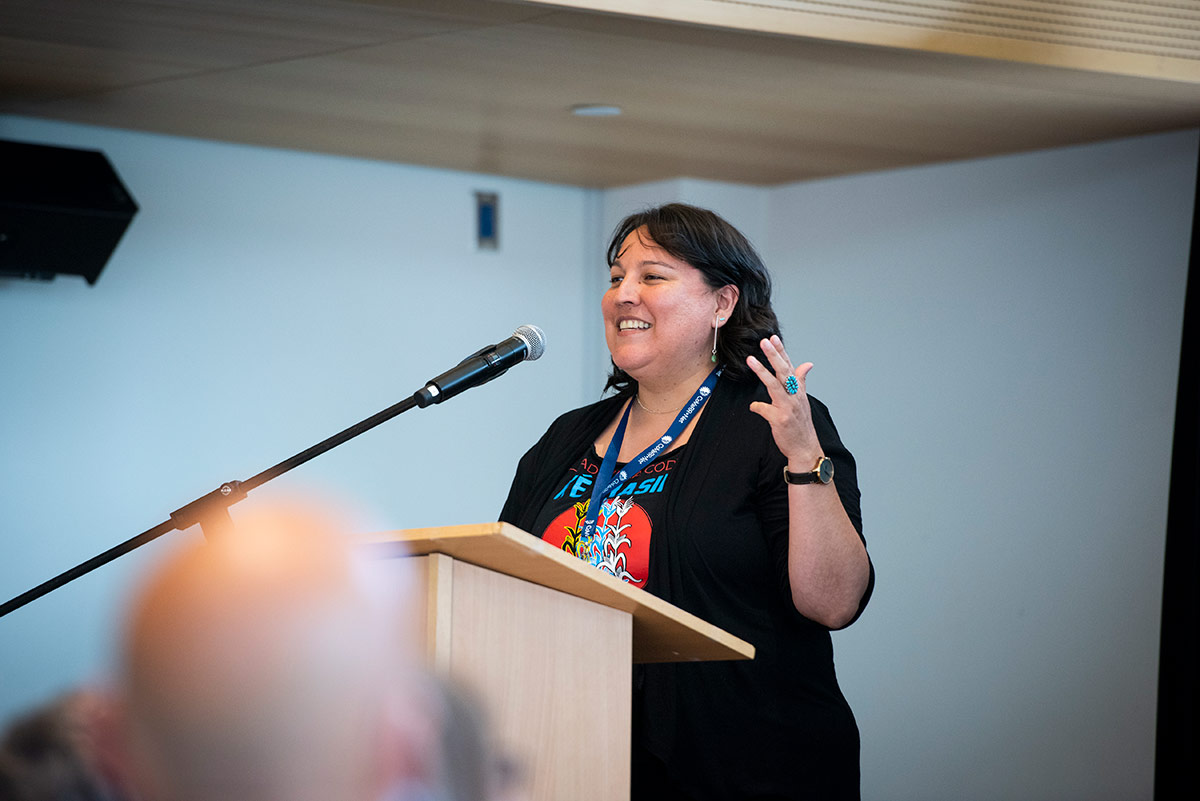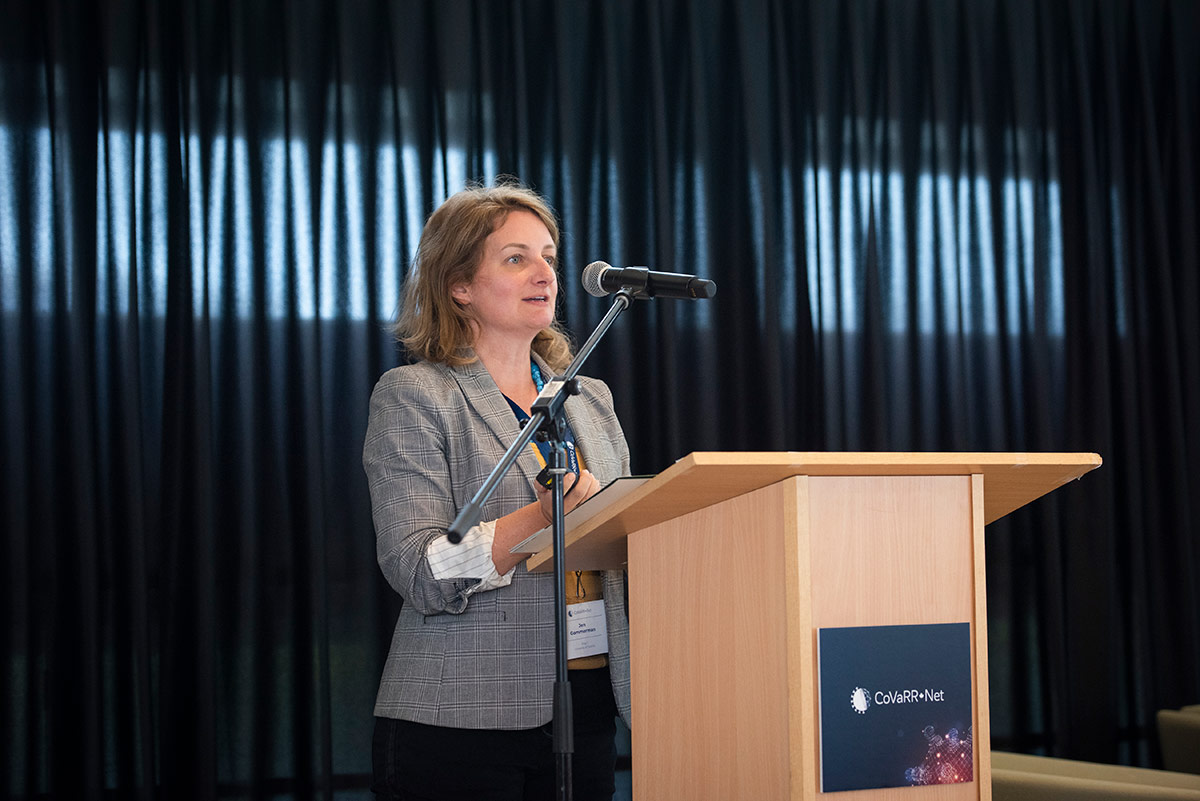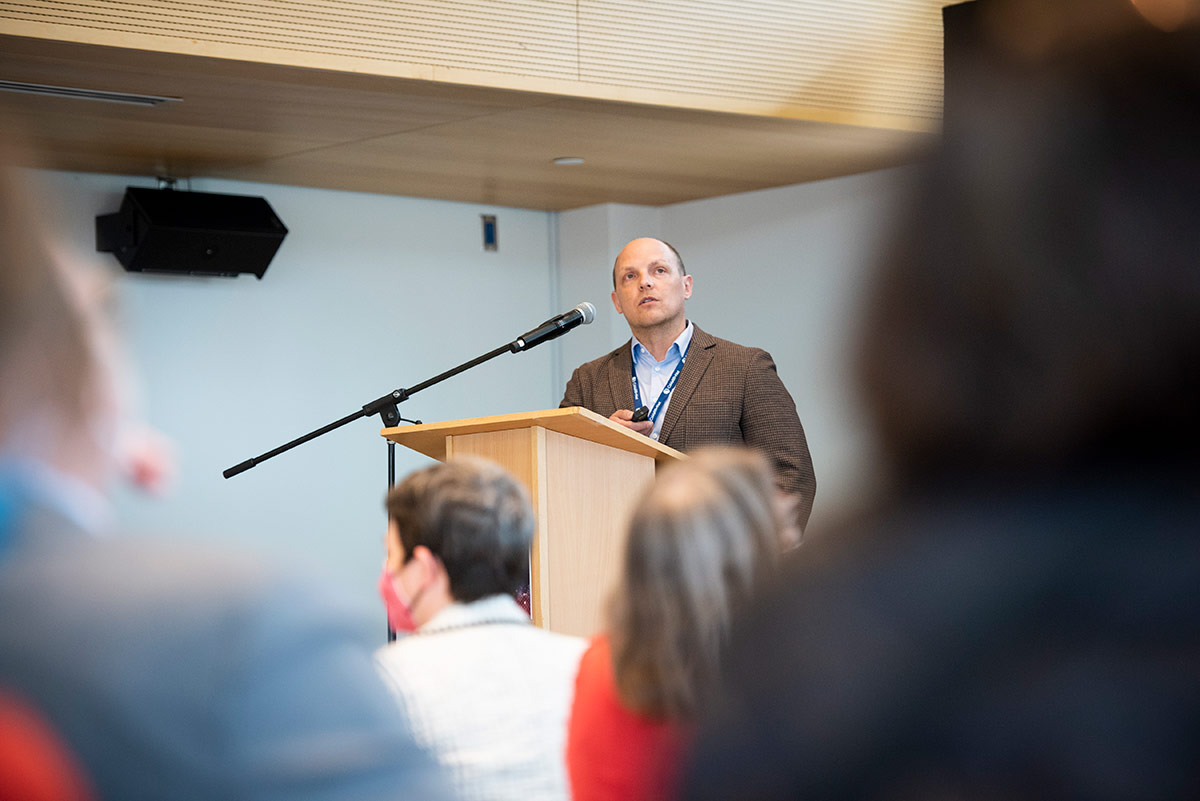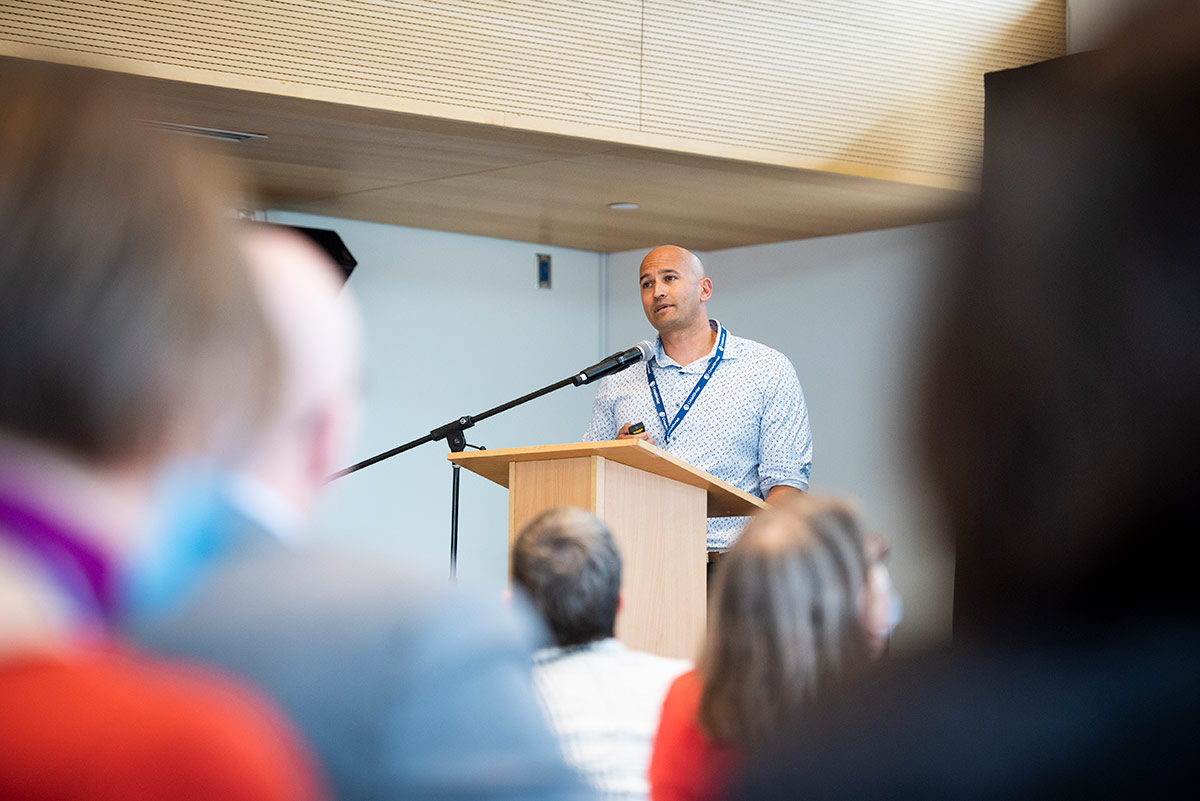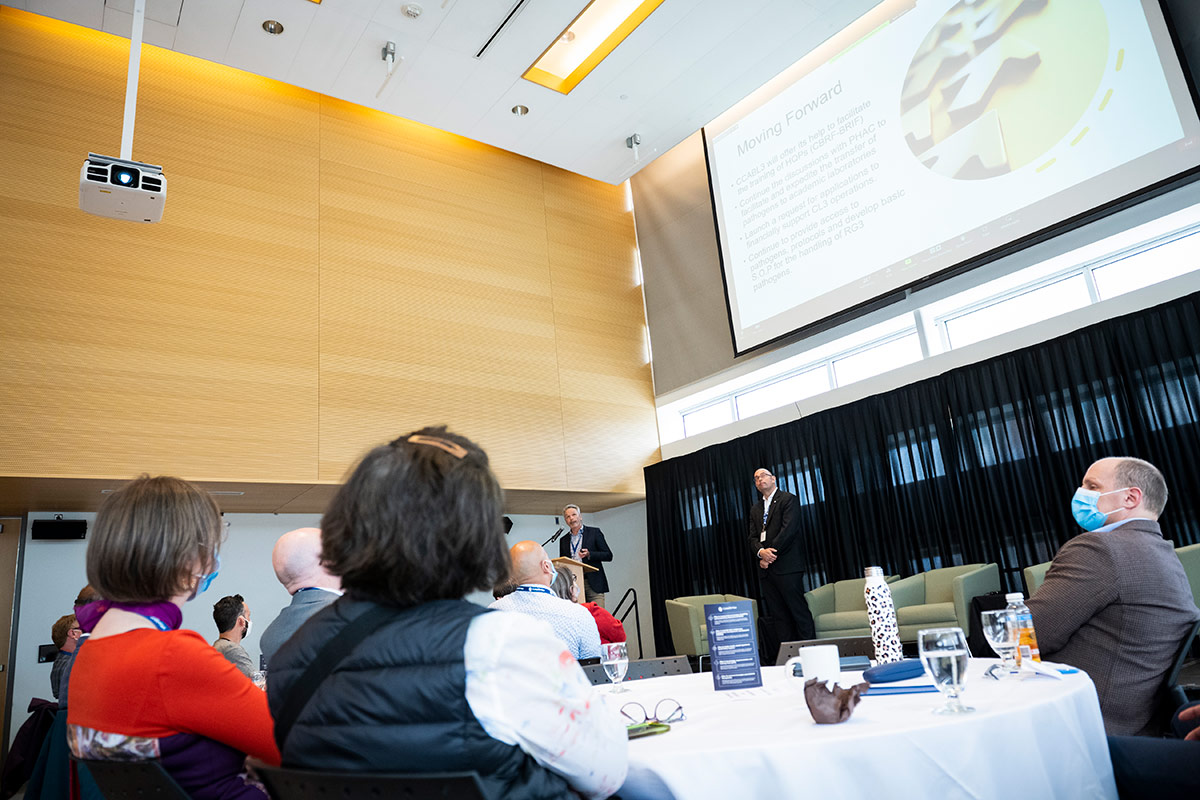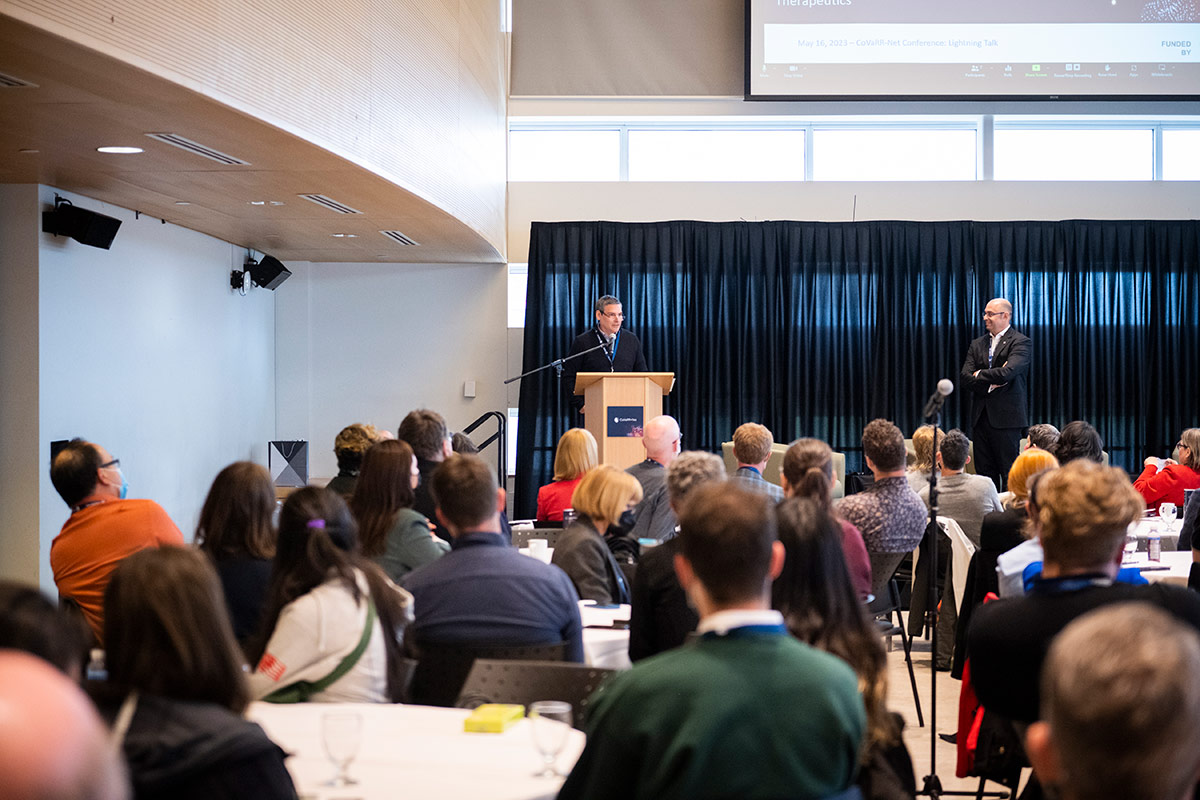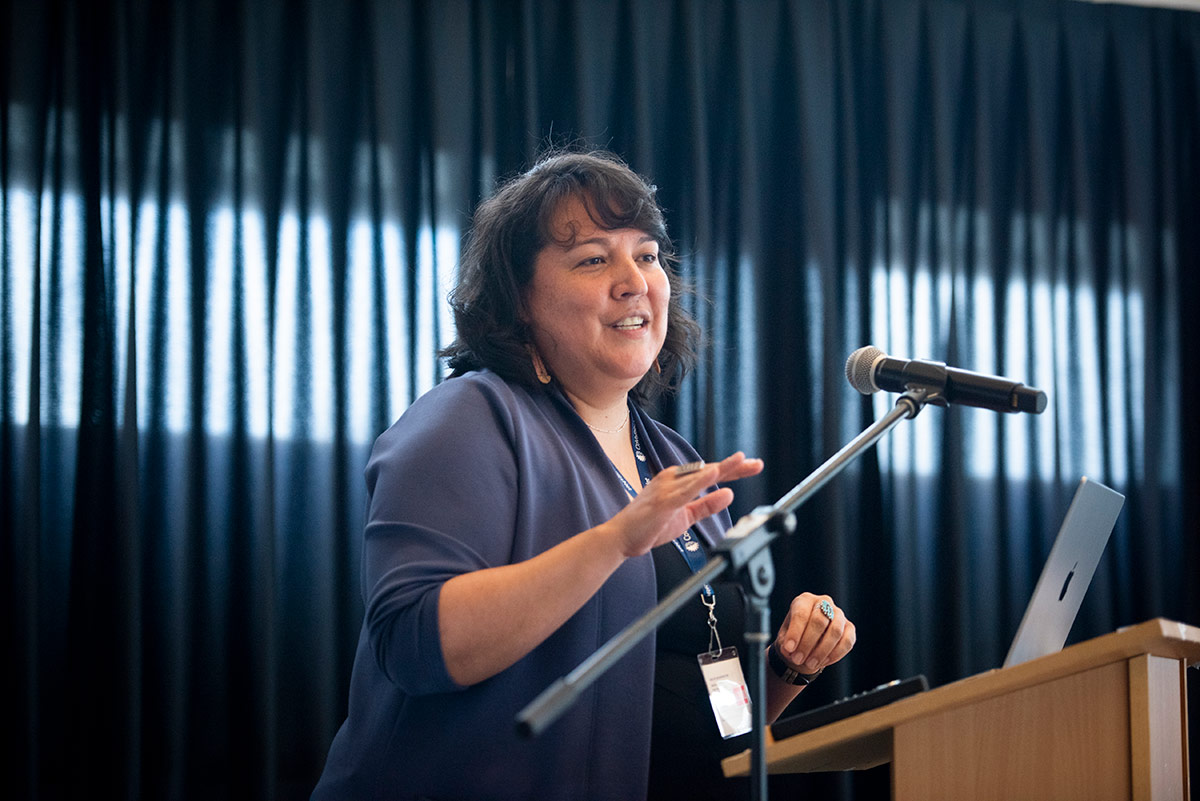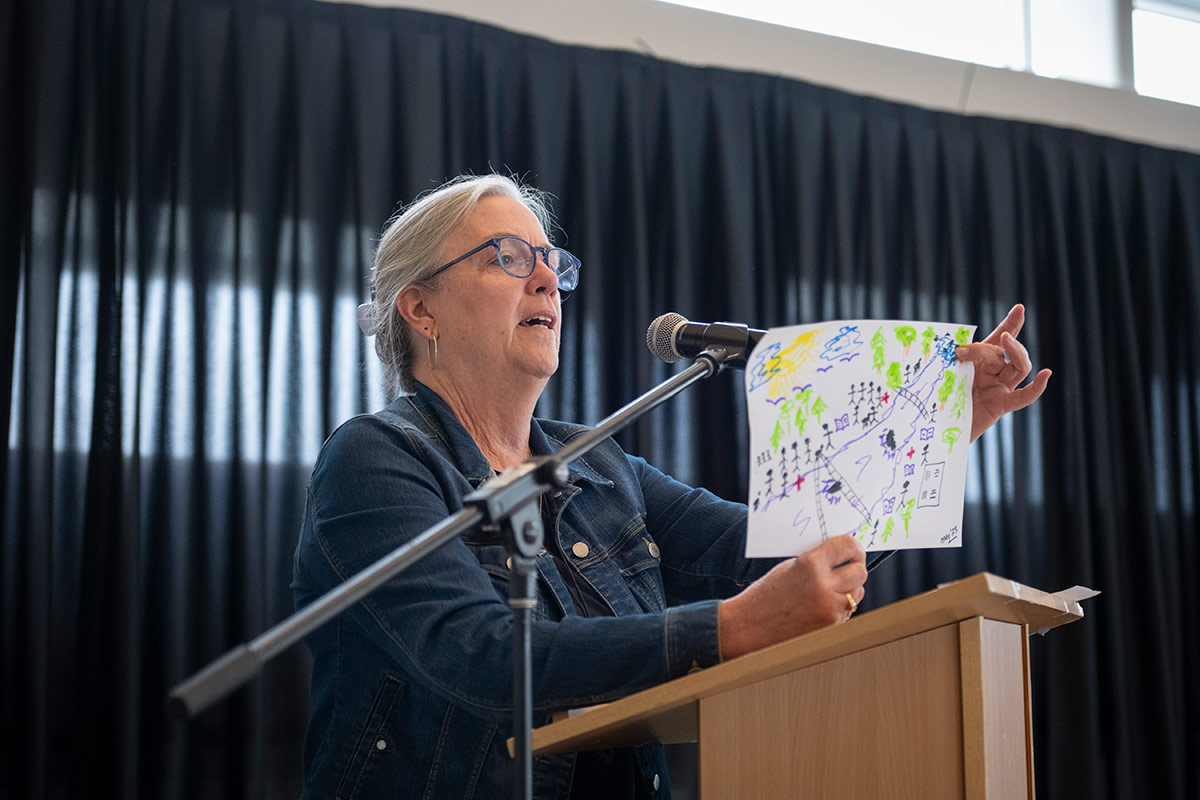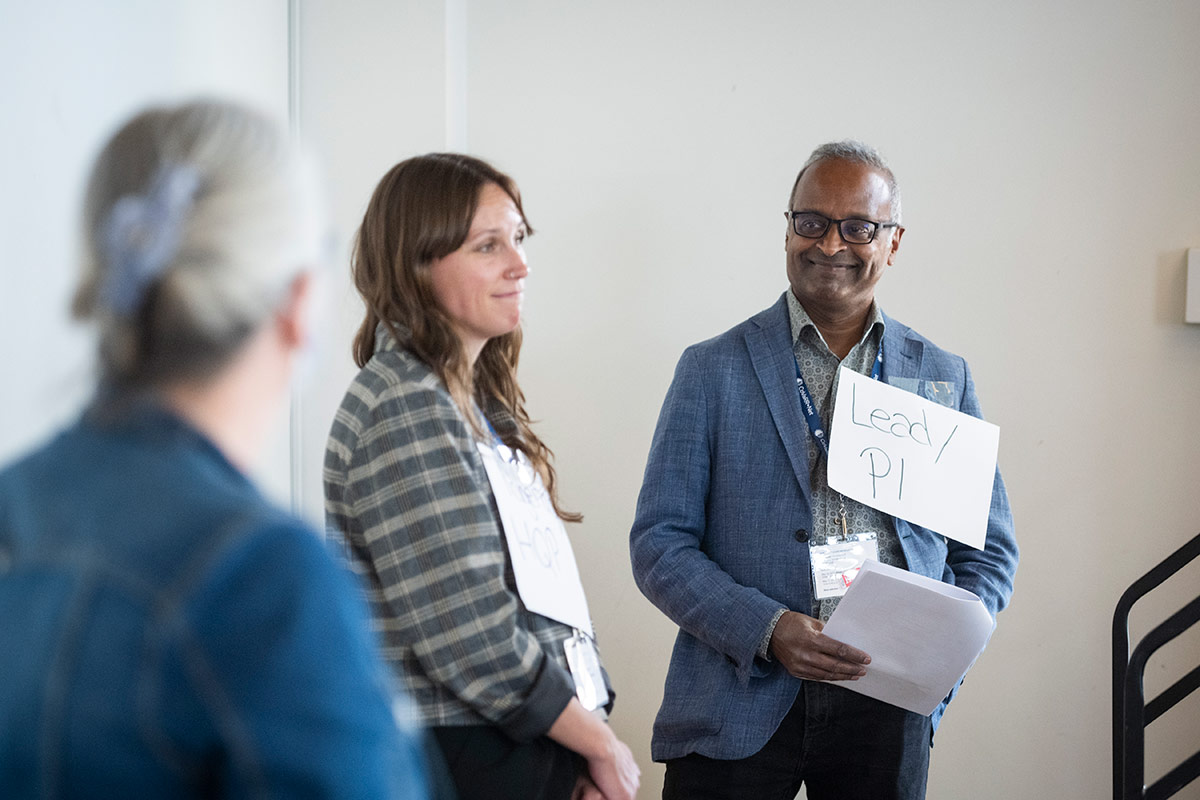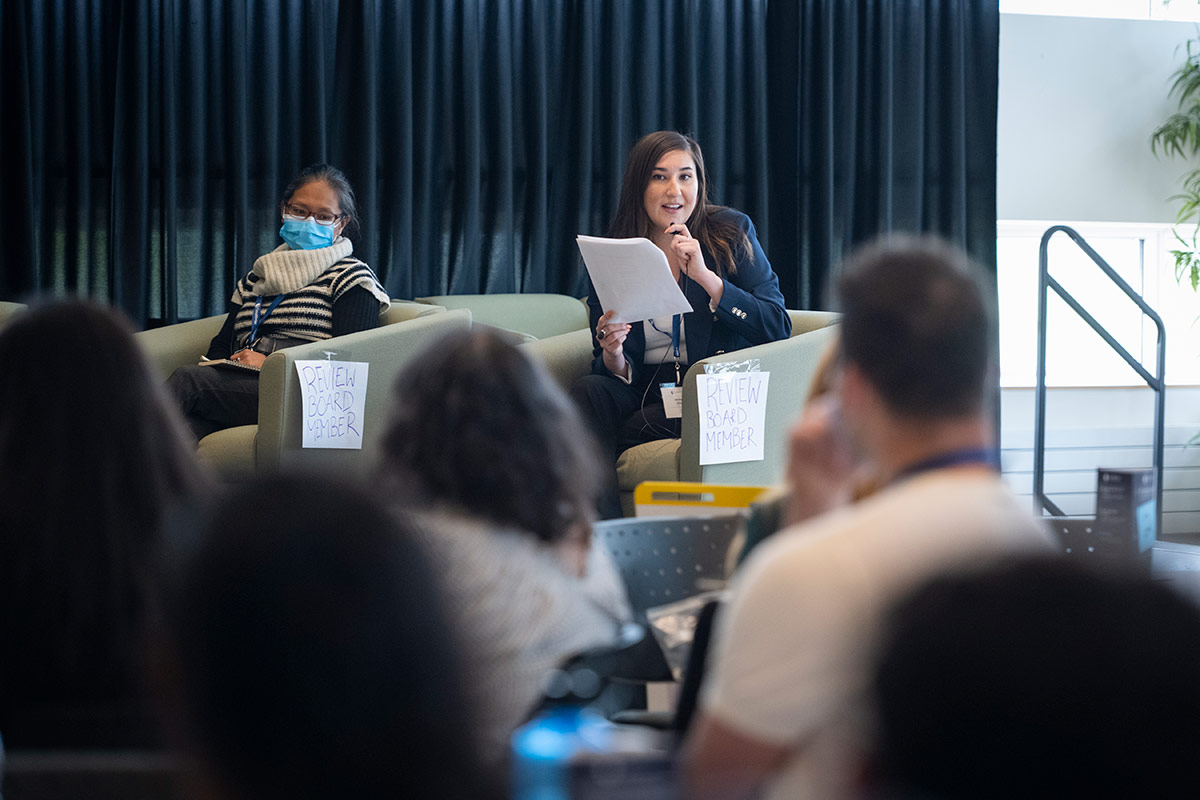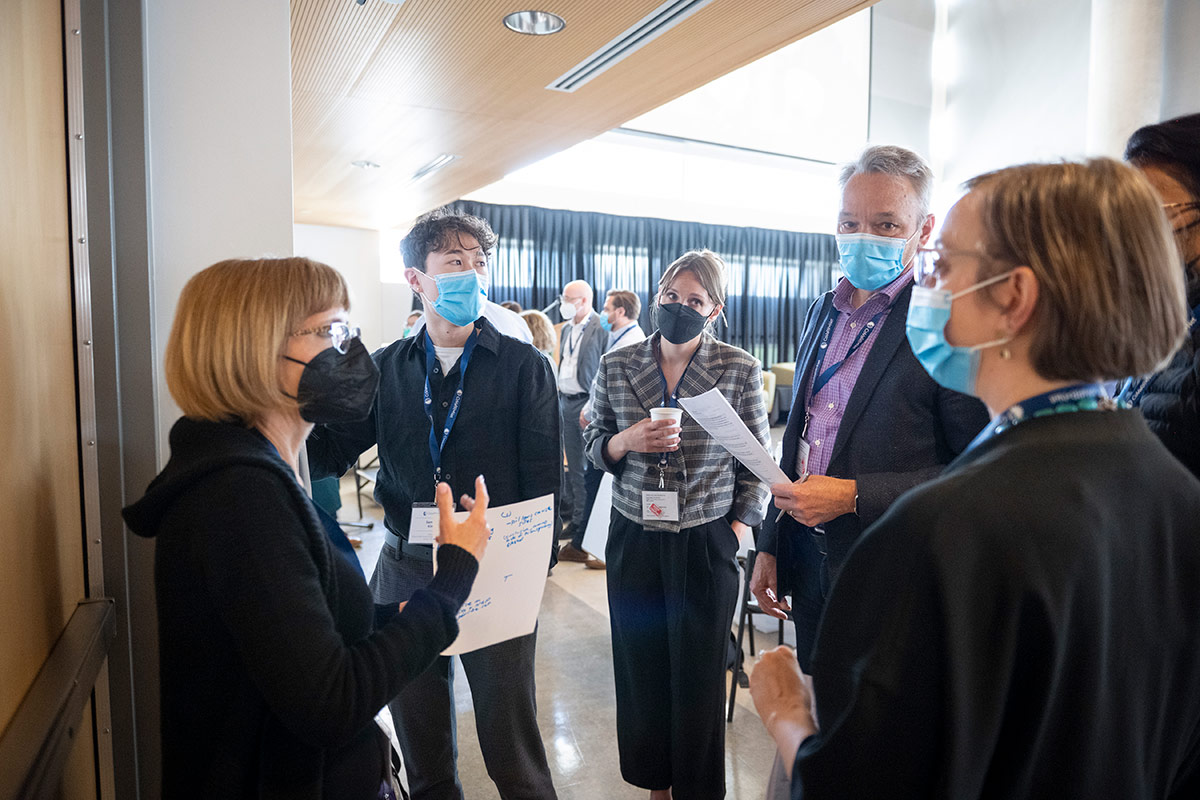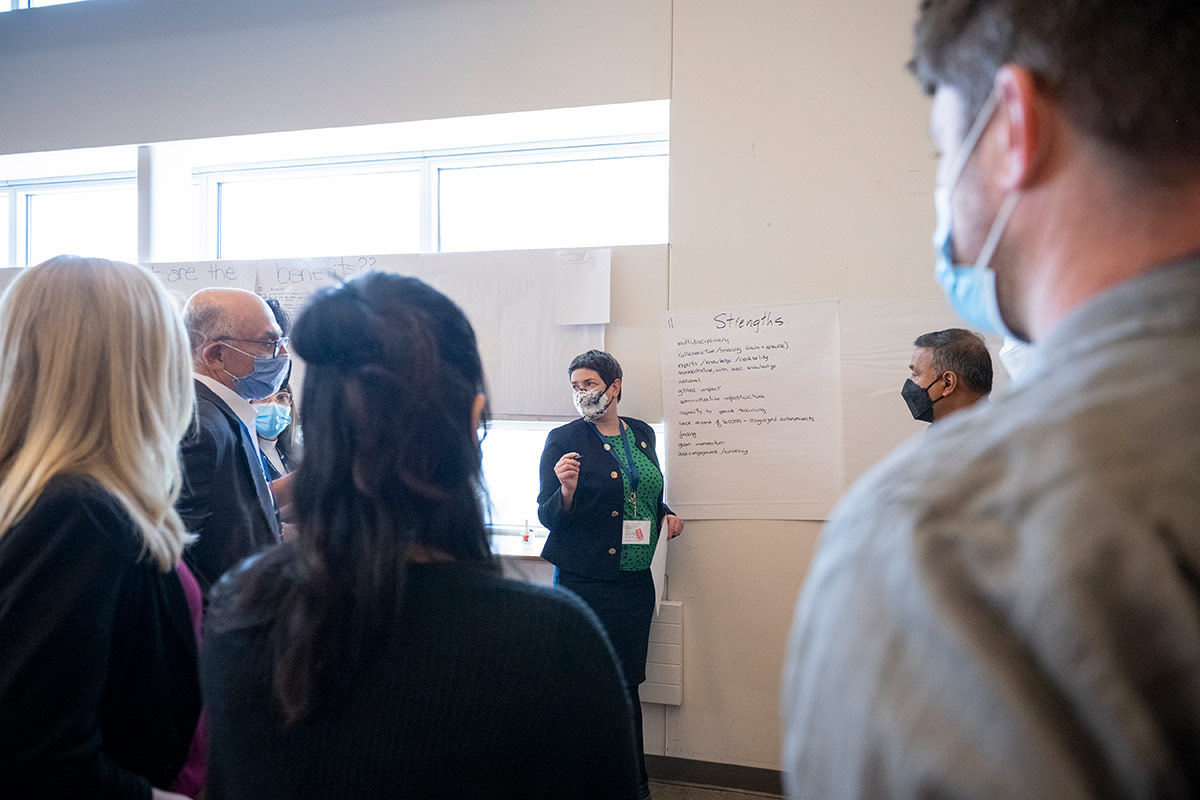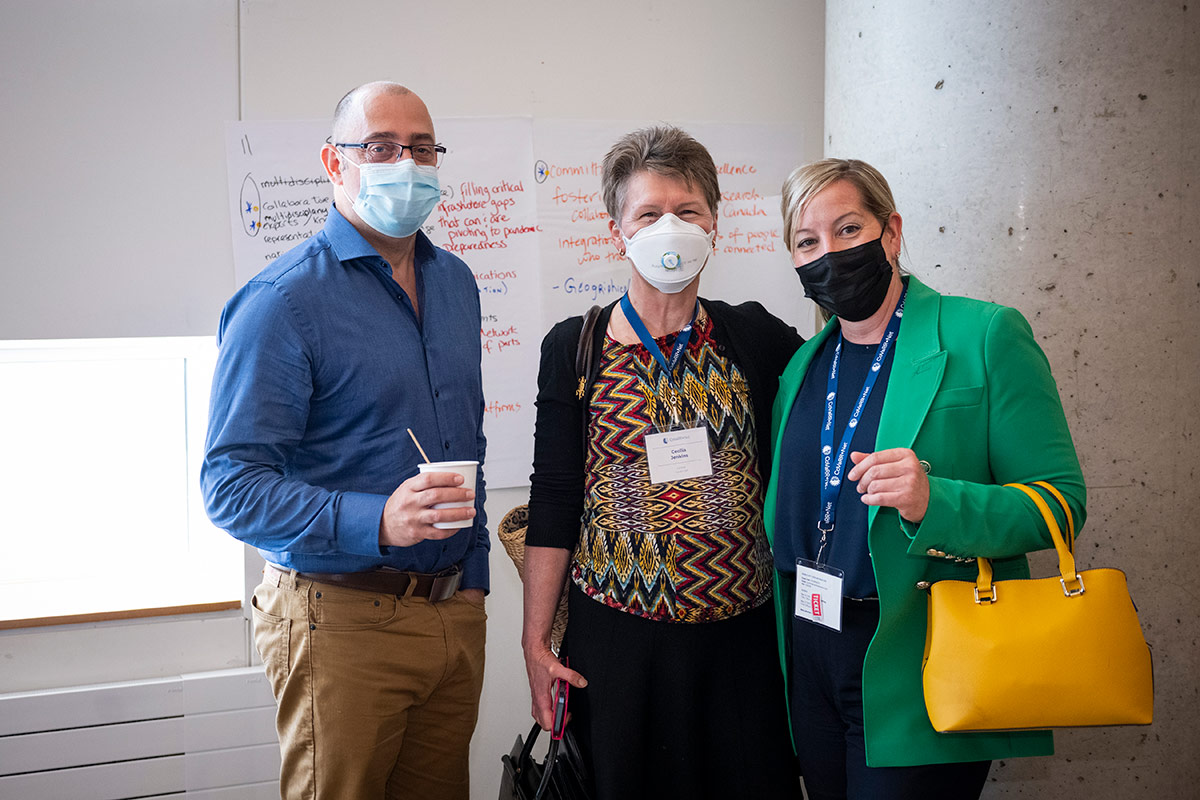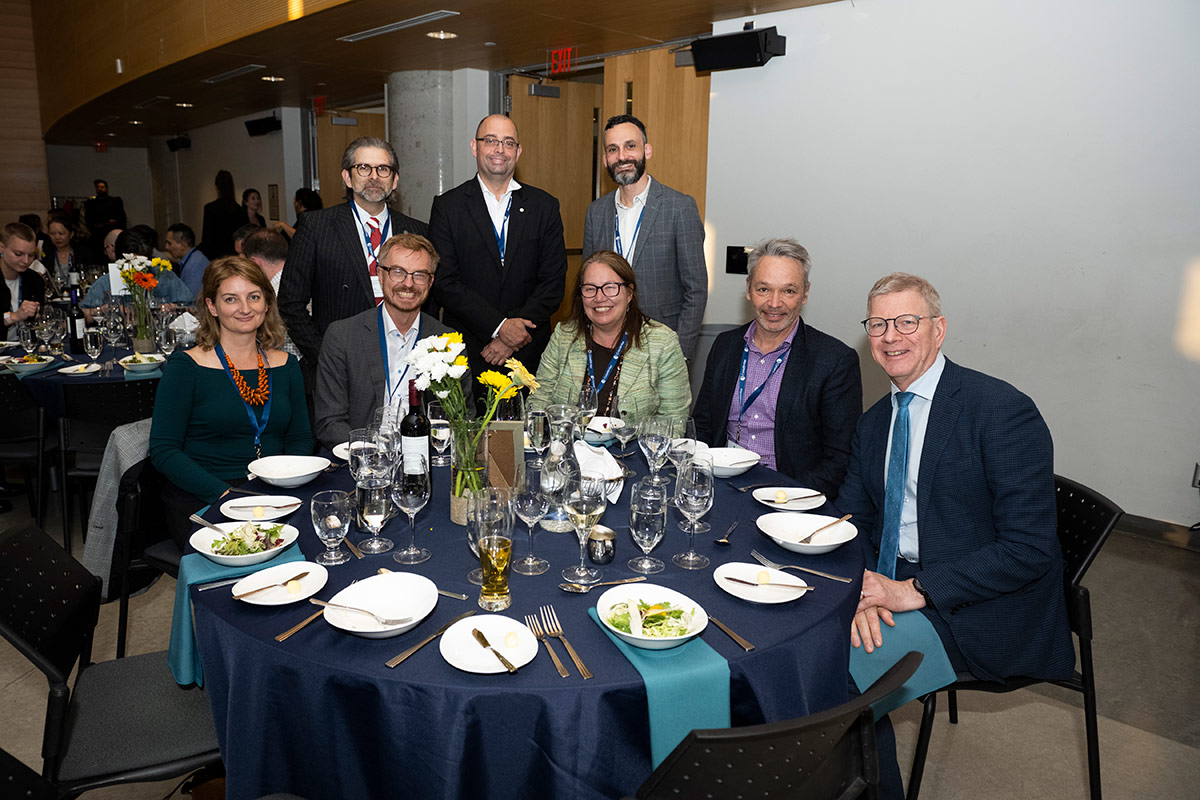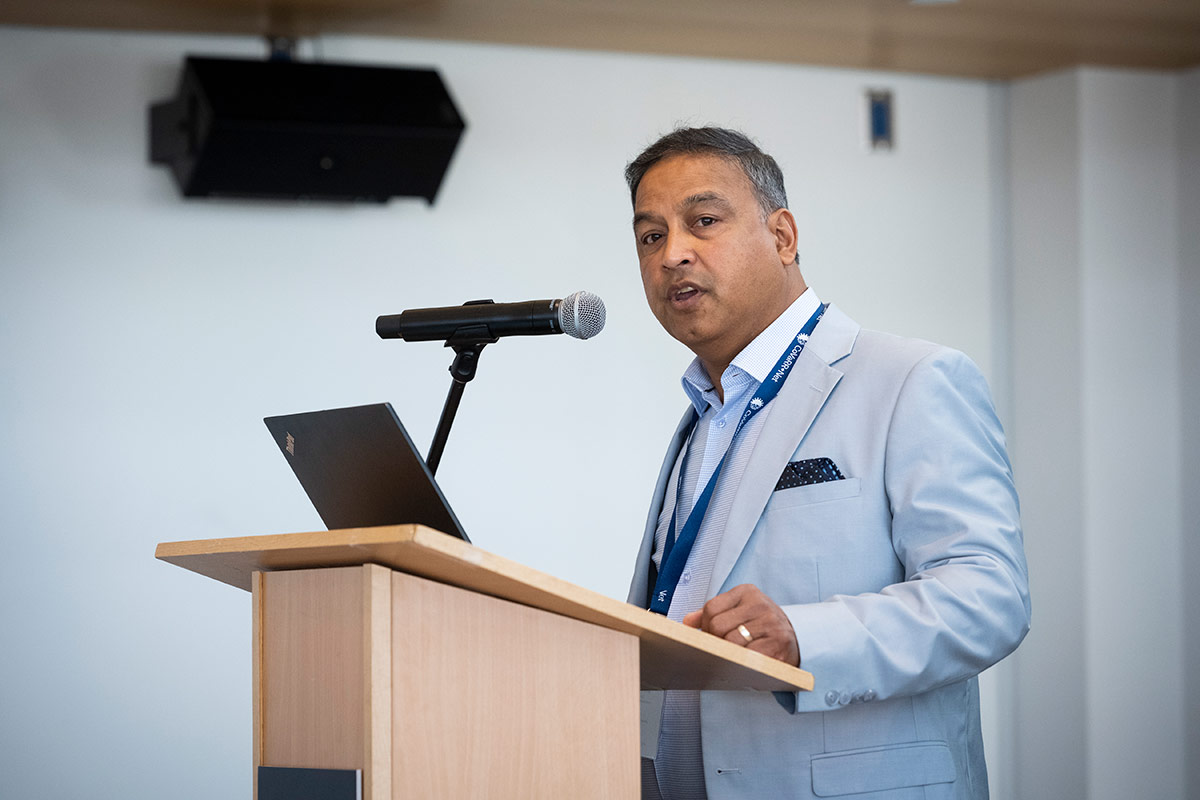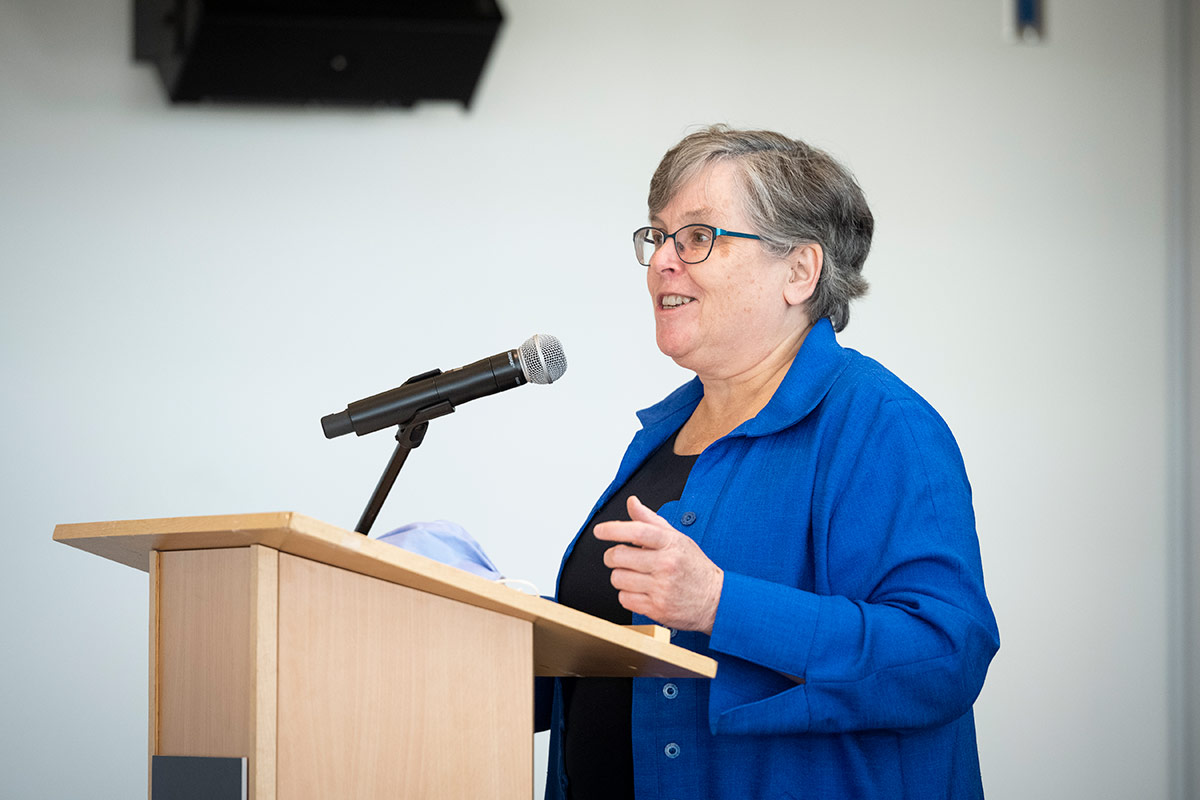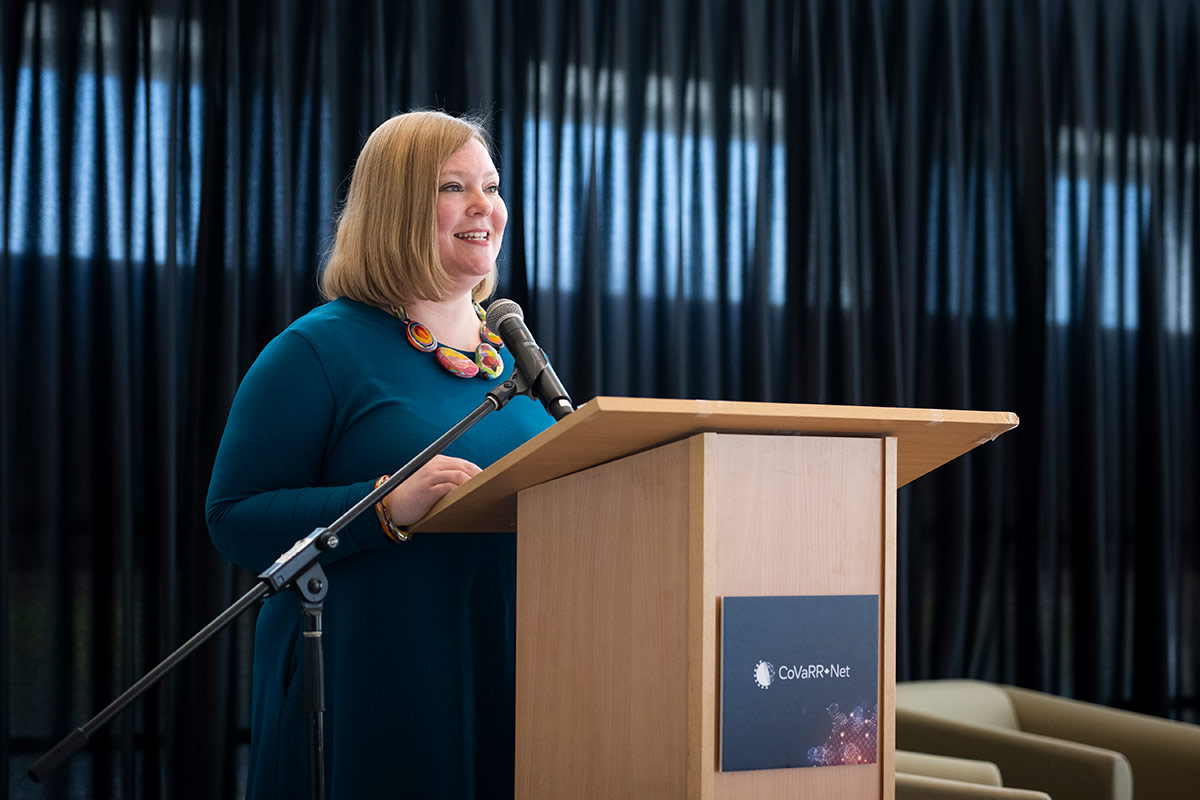Spring 2023 Meeting
After more than two years of existence, CoVaRR-Net held its first in-person meeting from May 16-18, 2023, in Ottawa.
It united about 120 participants, most of them internal to CoVaRR-Net, but also a few invited guests. The goals of the meeting were to provide an overview of past achievements and lessons learned, but mostly to look towards the future.
As an established pan-Canadian network of researchers from numerous areas of expertise, CoVaRR-Net is uniquely positioned to pivot and become an academic network for pandemic preparedness and prevention. The meeting therefore also sought to exchange on what an optimal pandemic preparedness network would look like, what government and other organizations would find useful, and explore what options we would have to make a successful pivot.
Panel discussions and speeches from key leadership figures provided critical feedback and information to our network members on issues related to public health and research, as well as government plans for pandemic preparedness in Canada.
During the morning of Day 2, which was dedicated to Equity, Diversity, Inclusion & Indigeneity (EDI&I) sessions, it became clear that the research community continues to have a lot to learn, that CoVaRR-Net is a leader in this respect, and that we can do more to promote EDI&I in research across Canada and around the world.
Finally, the meeting was a great networking opportunity, as many experts and trainees were meeting in person for the first time. It enabled our members to expand their collaborations and solidify new scientific relationships, all while creating the blueprint for Canada’s first academic network for pandemic preparedness and prevention.
Event Videos
Algonquin Territorial Welcome, Opening Talk, and Lightning Talks
CoVaRR-Net’s Spring 2023 Meeting was officially opened with Ms. Wendy Jocko, elected chief of the Algonquins of Pikwàkanagàn First Nation through the pandemic, offering an Algonquin Indigenous Welcome.
CoVaRR-Net Executive Director Dr. Marc-Andre Langlois then gave his Opening Talk. He told the story of how CoVaRR-Net was created in early 2021. The vision of three scientists, aided by an expert in writing funding proposals, presented the CIHR a vision of a small, nimble governance structure for a multidisciplinary rapid response research network of Canadian scientists. They would recruit Pillar Leads and Deputies who were undisputed leaders in their fields. It was an extreme rush submission, but they won the competition and CoVaRR-Net came to be.
The network now counts 125 researchers and 225 trainees across 28 Canadian institutions, who focus on projects to address critical research gaps. CoVaRR-Net also created structures and tools to facilitate and accelerate research, such as the Biobank, Data Platform, the Universal Data and Biologics Material Transfer Agreement, CAMEO, CIEDAR, CCABL3, and WWSRG. Dr. Langlois added that all network leadership would incorporate principles of ownership, control, access, and possession, also known as OCAP, into their own research programs involving Indigenous samples and communities.
In the Lightning Talks, each of CoVaRR-Net’s 10 Pillar and Major Initiative teams summarized more than two years of their work and research in less than four minutes. They also expressed their vision of a national network for pandemic preparedness.
Panel Discussion: Lessons learned/looking forward/what is expected from academics?
Moderator: Kelly Grant (national health reporter, Globe & Mail)
Panel Members: Heather Jeffrey (President, Public Health Agency of Canada), Dr. Stephen Lucas (Deputy Minister, Health Canada), Dr. Timothy Evans (Executive Director, COVID-19 Immunity Task Force), and Koko Bate Agborsangaya (Director, Strategic Programs, Genome Canada)
The Globe and Mail national health reporter, Kelly Grant, moderated a discussion with these key decisionmakers about how the Canadian research enterprise fared during the pandemic. They were asked about what worked well, what did not, what comes next, and how conference participants could help the country prepare for the next dangerous pathogen.
Stephen Lucas spoke about how the rapid mobilization of researchers helped drive a nimble, agile response, but acknowledged that connecting data sets from across the country continues to be a challenge. Koko Bate Agborsangaya spoke about Genome Canada’s success in bringing together researchers to do viral and host sequencing as SARS-CoV-2 evolved and sharing this information to help support public health decisions about protective measures and vaccine rollouts. Heather Jeffrey spoke about the unique opportunity for Canada in the next year to use our collective research experience and expertise to mobilize knowledge and bridge the sciences. This, during a time in which governments will need to make decisions about how resources will be invested going forward. Tim Evans explained that the CITF was created due to the lack of capacity, at the time, to monitor immunity throughout Canada. He named two other big challenges: our reliance on archaic 20th century tools to manage public health information and the lack of an institutional culture of emergency when it comes to research.
Introduction to Positionality and Health Equity 101
Speakers: Dr. Kimberly Huyser (Pillar7/CIEDAR Lead), Dr. Claire Betker (CoVaRR-Net’s Associate Director of Equity, Diversity, Inclusion, and Indigeneity (EDI&I))
Kimberly Huyser introduced attendees to the concept of positionality: what are the life experiences we have had that have shaped who we are. She pointed to the importance of dialogue and stories within Indigenous communities. She led conference participants in an exercise called “Drawing your River of Life”.
Claire Betker spoke about health equity being much more than equitable access to health services and care. She explained an aspirational definition of health equity: all people would have fair access to, and could act on, opportunities to reach their full health potential, without being disadvantaged by social, economic, or environmental factors. She explained the differences between inequality, equality, equity, and justice and how the National Collaborating Centre for Determinants of Health gets the evidence into the hands of people who work in public health.
The Basics of OCAP Principles
Speakers: Dr. Ninan Abraham (CoVaRR-Net’s Director of Equity, Diversity, Inclusion, and Indigeneity (EDI&I))
Ninan Abraham explained the basics of OCAP (ownership, control, access, and possession) and EDI&I (Equity, Diversity, Inclusion, and Indigeneity) principles. He explained how these principles should be included in everything that involves researchers, trainees, and patients in light of the colonial and harmful approaches of the past. He explained that CoVaRR-Net’s initial CIHR grant application stated that OCAP-like principles would be in place to shape how health researchers engage with underrepresented communities, including Indigenous and Black communities. These principles were also written into the network’s Universal Data and Biological Materials Transfer Agreement (UDBMTA).
Simulated Community Health Review Board activity
Speakers: Dr. Kimberly Huyser (Pillar7/CIEDAR Lead), Dr. Claire Betker (CoVaRR-Net’s Associate Director of Equity, Diversity, Inclusion, and Indigeneity (EDI&I))
Led by Dr. Kimberly Huyser (Pillar 7/CIEDAR Lead)
One of the most popular segments of the Spring 2023 Meeting was a skit simulating an interaction between a non-Indigenous research team and an Indigenous community review board. EDI&I Associate Director Claire Betker, CIEDAR’s Graduate Academic Assistant Traci Christianson, and EDI&I Director Ninan Abraham, played the role of scientists wanting to conduct research in the Indigenous community in question. Kimberly Huyser, Maria Santos, Senior Manager, Public Health Data Initiatives & First Nations Data Centre at the First Nations Information Governance Centre, and Michelle Zinck, CoVaRR-Net’s EDI&I Manager, were playing review board members in the Indigenous community.
This entertaining, educational skit showed common mistakes health researchers make in presenting research applications to Indigenous communities. It provided context as to why researchers must build relationships with individual communities prior to starting a project and allow time to establish effective research collaborations. The simulation also offered pointers about how best to establish successful research collaborations with Indigenous communities.
Breakout Session #1- Question: “Data and Reagent Sharing
Moderators: Dr. Kimberly Huyser (Pillar 7/CIEDAR Lead), Nikita Rayne (Biobank Manager), and Dr. Erin Gill (CAMEO Coordinator)
Panel Members: Dr. Angela Crawley (Biobank Director), Dr. Amy Hsu (Data Platform Director), Dr. Ninan Abraham (EDI&I Director), Carol Bennett (Wastewater Surveillance Research Group Coordinator), Dr. Sarah (Sally) Otto (CAMEO Co-Lead)
Angela Crawley presented CoVaRR-Net Biobank’s achievements in breaking down barriers to the timely exchange of materials and data within CoVaRR-Net and beyond, and discussed key challenges that the Biobank is well-positioned to address. Amy Hsu talked about the role of the CoVaRR-Net Data Platform and the federated model of the CoVaRR-Net COVID-19 Canadian Biobank Data Alliance Catalogue. Kimberly Huyser spoke about Indigenous data sovereignty and data sharing, and how to work with Indigenous Peoples and biodata. Carol Bennett presented the development and advantages of CoVaRR-Net’s Public Health and Environmental Surveillance and Open Data Model, which has been expanded to include surface and air testing, in addition to wastewater data. Sally Otto talked about Canada’s accomplishments in rolling out huge data platforms that have given us an unprecedented level of detail about the spread of SARS-CoV-2 across Canada. She highlighted the important role that CoVaRR-Net can play in linking siloed data sets, allowing it to be used for the best possible health purposes.
Keynote Presentation:
COVID-19 Where are we? How did we do? What can we do better?
Speaker: Dr. Allison McGeer (Infectious disease physician Sinai Health System, University of Toronto)
Allison McGeer spoke about pandemic management successes such as wastewater surveillance, vaccine rollout, vaccine registries, vaccine safety surveillance, and seroprevalence data. However, she stated that Canada did poorly when it came to school closures and in protecting lower-income, marginalized populations and long-term care residents from death and hospitalization. She added that COVID-19 highlighted the health inequalities in this country, adding Canadian health researchers need to figure out solutions to move toward greater health equity.
COVID-19 and science as first responder: Where do we go from here?
Speaker: Dr. Sarah Viehbeck (Chief Science Officer, Public Health Agency of Canada)
Sarah Viehbeck talked about the linkage of intra- and extra-mural science, how the Public Health Agency of Canada grew to become more innovative, what that means for the future in terms of government collaboration with extramural scientists, and how the pandemic accelerated shifts in how science is done.
She spoke about how science is not only a first responder but also key to any credible, evidence-based emergency health system, from prevention to preparedness, through response to recovery. She explained that over the course of the pandemic, there was a gradual shift from a focus on biomedical capacity to an expanded focus on the social and behavioural sciences, making more significant contributions in relation to social and mental health impacts, economic impacts, and the implementation of science.
Panel Discussion 2: Public Health
Moderator: Dr. Allison McGeer (Sinai Health System/University of Toronto)
Panel members: Dr. Marisa Creatore (Executive Director of the Centre for Research on Pandemic Preparedness and Health Emergencies, CIHR), Dr. Vera Etches (Medical Officer of Health, Ottawa Public Health), Dr. Guillaume Poliquin (Vice President of the National Microbiology Laboratory Branch of the Public Health Agency of Canada), and Dr. Susan Tamblyn (Public Health Consultant, former Medical Officer of Health for the Perth District Health Unit and Clinical Professor Western University)
Allison McGeer moderated this discussion among four leading Canadian public health experts who spoke about their organizations’ roles and lessons learned. They discussed their experiences in regard to effective pandemic planning, preparedness, response and recovery, and the interplay between public health and science, including frontline support for populations in communities.
Susan Tamblyn pointed to the continued lack of timely scientific evidence to enable public health officials to make decisions based on science. She added the ideal in the next pandemic would be to have solid scientific evidence in time to guide the public health response. Marisa Creatore spoke about how the CIHR’s new Centre for Research on Pandemic Preparedness and Health Emergencies will be earmarking funds to help support an emergency-ready research ecosystem through targeted infrastructure investments. Guillaume Poliquin spoke about pandemic preparedness as a social contract: we ask citizens to allot resources that governments and researchers use to prepare for something that may never come. The value proposition is, therefore, challenging, he said. Vera Etches talked about her experiences on the front lines, leading a public health organization. She spoke about the challenges in the cycle of preparedness, response, and recovery, with evaluation and communication needed all throughout the process.

